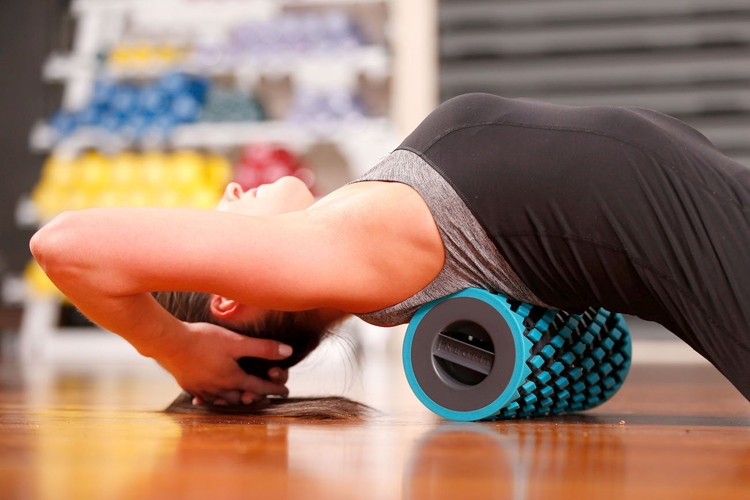You are viewing 1 of your 1 free articles. For unlimited access take a risk-free trial
Fantastic plastic!

The birth of the transistor in 1947 was without doubt one of the most important technological developments of the 20th Century. Without silicon transistors, the construction of small complex circuit boards and fast processors – essential components of the computer – would have been impossible. No computers, no internet, no email, no mobile phones; you get the idea.
But the first half of the last century saw another rapid advance in technology that was to change our world. Today, you take them for granted, but without the development of plastics, life in the 21st Century would be very different. PVC, polythene, polystyrene, Teflon and nylon are all compounds developed in that era - compounds and materials that are now essential for everyday modern life.
The fitness plastic
What’s all this got to do with sport I hear you ask? Well, if you use training shoes of any description, you can bet your bottom dollar that they’ll be reliant on plastic technology. One of the best examples is the polymer called ethylene vinyl acetate – better known as EVA to most of us.
Unlike most plastics, EVA can be used to construct a solid, yet supple and compressible foam – perfect for running shoe soles. And although there are other polymer plastics in use, it’s fair to say that over the years, the cushioning qualities of EVA have protected more runners from more injuries than any other plastic!
But the wonders of EVA use don’t stop there. Add a bit of cross linking during the synthesis process and you get ‘closed-cell’ EVA foam, a light and hard, but strong and resilient foam. Triathletes and swimmers will be familiar with closed cell EVA foam as it’s the staple material for kickboards. But there’s another fitness use for this type of EVA, and perhaps one that more of us should be familiar with – foam rollers.
A simple cylindrical shape constructed of closed cell EVA foam, the foam roller has become increasingly popular with athletes who need to reduce muscle tension but haven’t got the dosh to pay for regular massages after strenuous workouts. But just how effective is foam roller use? And can it really help dissipate muscle tension and improve performance?
This is a subject we have explored in depth in Sports Performance Bulletin. In particular, sports physiotherapist Trevor Langford looks at how and why muscles get tight and ‘knotted’ after training. Trevor also gives lifestyle tips and strategies to prevent painful and debilitating muscle knots forming in the first place.
But he also highlights evidence showing that the regular use of foam rollers is an effective way to help combat muscle knots when regular massage isn’t possible, and goes on to provide examples of exercises that can be done at home with a nothing more than cylindrical piece of EVA foam. So let’s hear it for those pioneering scientists of the 40s and 50s, and the development of fantastic plastic!
Andrew Hamilton BSc Hons MRSC ACSM, Sports Performance Bulletin editor
In pain and wondering whether to train? Check out this article:
Newsletter Sign Up
Testimonials
Dr. Alexandra Fandetti-Robin, Back & Body Chiropractic
Elspeth Cowell MSCh DpodM SRCh HCPC reg
William Hunter, Nuffield Health
Further reading
Newsletter Sign Up
Coaches Testimonials
Dr. Alexandra Fandetti-Robin, Back & Body Chiropractic
Elspeth Cowell MSCh DpodM SRCh HCPC reg
William Hunter, Nuffield Health
Keep up with latest sports science research and apply it to maximize performance
Today you have the chance to join a group of athletes, and sports coaches/trainers who all have something special in common...
They use the latest research to improve performance for themselves and their clients - both athletes and sports teams - with help from global specialists in the fields of sports science, sports medicine and sports psychology.
They do this by reading Sports Performance Bulletin, an easy-to-digest but serious-minded journal dedicated to high performance sports. SPB offers a wealth of information and insight into the latest research, in an easily-accessible and understood format, along with a wealth of practical recommendations.
*includes 3 coaching manuals
Get Inspired
All the latest techniques and approaches
Sports Performance Bulletin helps dedicated endurance athletes improve their performance. Sense-checking the latest sports science research, and sourcing evidence and case studies to support findings, Sports Performance Bulletin turns proven insights into easily digestible practical advice. Supporting athletes, coaches and professionals who wish to ensure their guidance and programmes are kept right up to date and based on credible science.





